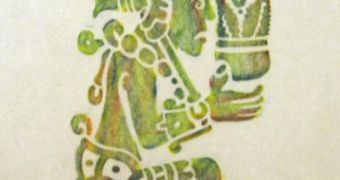They may have been fearsome warriors ripping out the heart of the enemies in complex rituals, but the ancient Maya ate tapioca (manioc starch) some 1,400 years ago.
The finding was made at a Maya farm preserved in volcanic ash and explains how the large Mayan cities supported the population boom. "There's a good chance that this will change the way we look at how the Mayans fed themselves," said lead researcher Payson Sheets, an anthropologist at University of Colorado at Boulder.
The ancient manioc field was found near Ceren, a Maya village in El Salvador, about 15 mi (25 km) west of San Salvador. Initially, the team believes it was digging an ancient cornfield when the researchers stumbled on traces of manioc roots perfectly preserved by a volcanic ash.
"The nearby village was covered with as much as 17 feet (5 meters) of ash, preserving it in remarkable detail," said the archaeologists. "When we excavate [at Ceren], we're looking at that moment from all that time ago. It's as close as the present can get to the past, which, for archaeologists, is a very exciting endeavor.", said co-researcher Christine Dixon, a doctoral candidate from Lafayette, California.
The researchers were puzzled by how Maya could have produced enough carbohydrate-rich foods to maintain large populations in cities like Tikal in Guatemala and Cop?n in Honduras. Maize was known to be the base of their diet, but it did not explain everything.
Experts had theorized that the ancient Maya may have eaten manioc, which is more productive than corn, delivering large tubers filled with starch, but this is the first proof that Mayans cultivated manioc.
Sheets' team discovered the ancient manioc field when they detected holes in the field sealed by ash. Dental plaster molds showed the holes were manioc tubers replaced by ash. "The find is incontrovertible, gorgeous evidence of manioc cultivation. I'd like to say that [the discovery] was due to a logical process with geophysical instruments, that it was due to exceptional insight and wisdom on our part," said Sheets.
But human victims of the volcanic blast have never been encountered at Ceren, after some 30 years of digging. "The villagers may have been warned that the volcano was about to blow when rising lava turned underground water to Steam. When the steam was forced out of cracks in the surface, it could have created a horrifying shriek that sent the Mayans fleeing," explained Sheets.
"Perhaps the villagers escaped unharmed or perhaps they were overtaken by the volcano's fast-moving cloud of ash and gases and their bodies haven't been discovered yet. There's well over a century of research to be done there."

 14 DAY TRIAL //
14 DAY TRIAL //